In October 2020, we surveyed Washington’s cities to learn about the current city conditions.
Read a snapshot of what we learned.
Who took the survey?
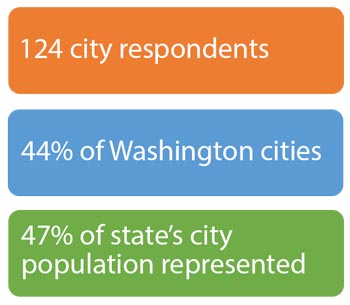
What we found
Cities reported the following as the most pressing community challenges in 2020. (This excludes the COVID-19 pandemic response.)
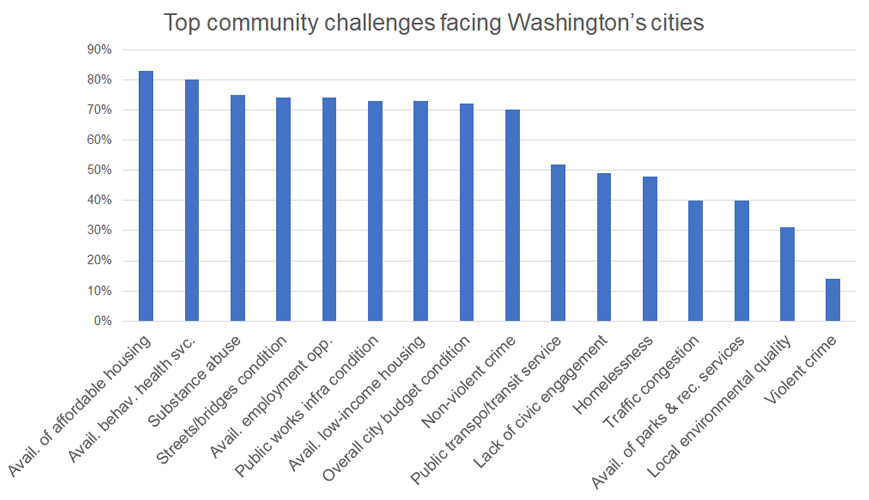
When asked what state actions would help cities meet their local needs, we found that the state can help in many ways. While cities seek state support through various funding mechanisms, infrastructure project assistance and sharing revenues rise to the
top.
Notably, cities’ most pressing conditions and how they seek state help do not line up item-for-item. This tells us that each city faces slightly different local challenges. Cities want fiscal flexibility to direct scarce resources where they are
most needed when responding to pressing community conditions.
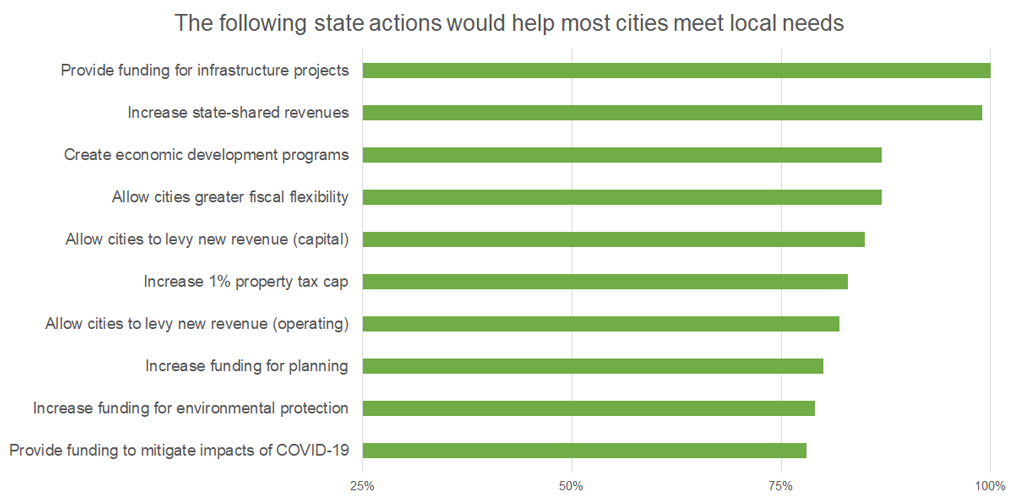
Asked to select three policy priorities for 2021, infrastructure, economic development, and public safety rise to the top in cities.
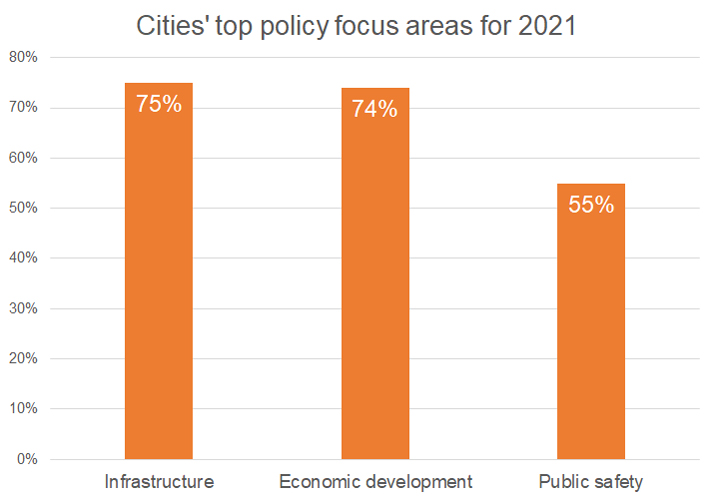
COVID-19 impacts in cities
92% of cities have incurred expenses from the COVID-19 pandemic and resulting economic slowdown. That’s up from 87% of cities when we asked the same question in June.
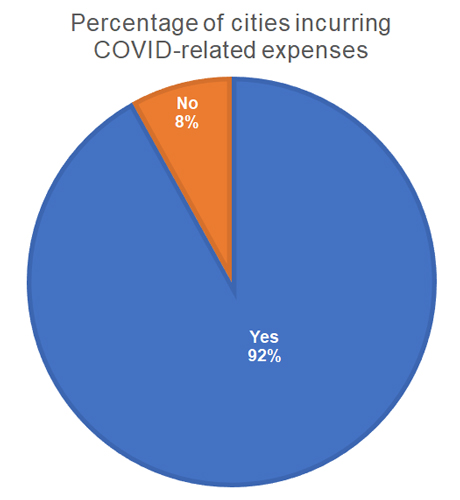
Despite the devastating impacts of the COVID-19 pandemic, cities have managed to maintain high-quality levels of service. This is largely due to two reasons:
- The state’s swift action to share federal CARES Act funding with local governments; and
- Cities’ successful implementation of tools and cost-saving measures to weather the short-term impacts and minimize service interruptions to residents.
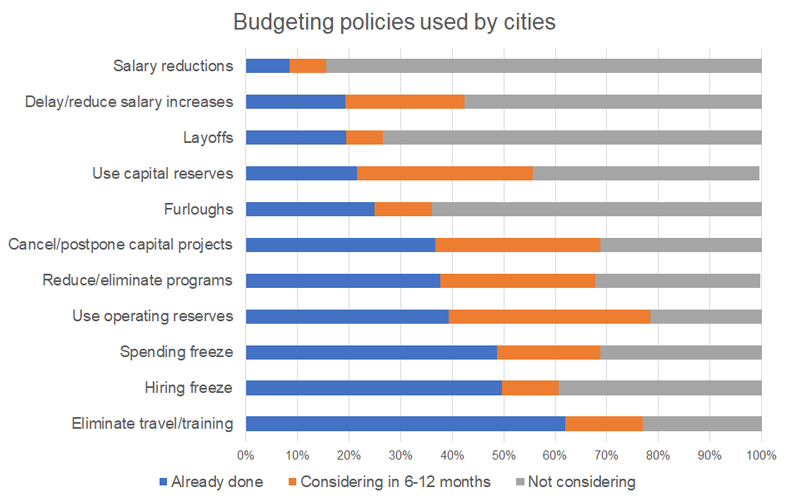
Cities have turned to a variety of budgeting policies to cut costs in the short-term. Other cost-saving measures reported by cities but not included in the chart above:
- Considering utility rate increases
- Voluntary separation/retirement programs
- Restructuring departments
- Leaving vacant positions unfilled or implementing hiring freeze on select positions
- Using surplus funds above reserve amounts
Most cities incurred expenses in general government and information technology as they transitioned city operations to meet the needs of residents and staff.
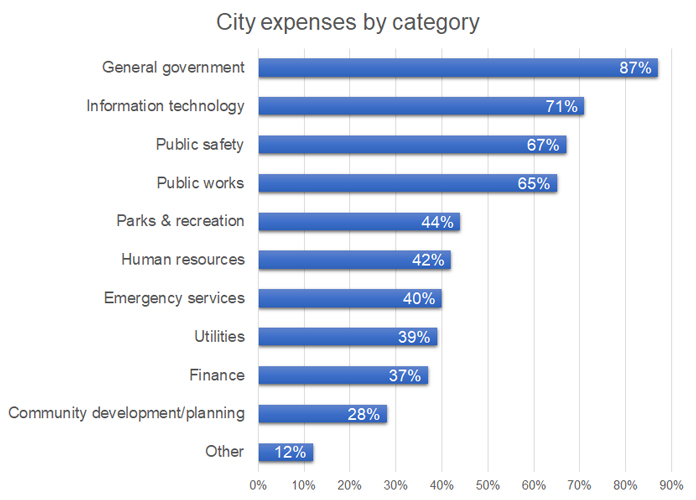
However, the majority of cities project continued revenue losses in the remainder of 2020 and in 2021.
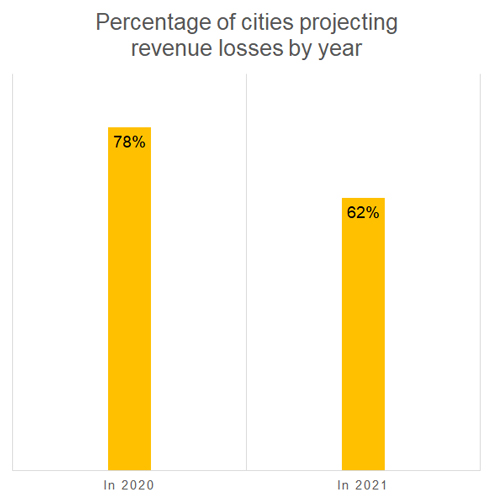
Of those cities projecting revenue losses in 2021, 63% project losses of greater than 5%. It breaks down like this:
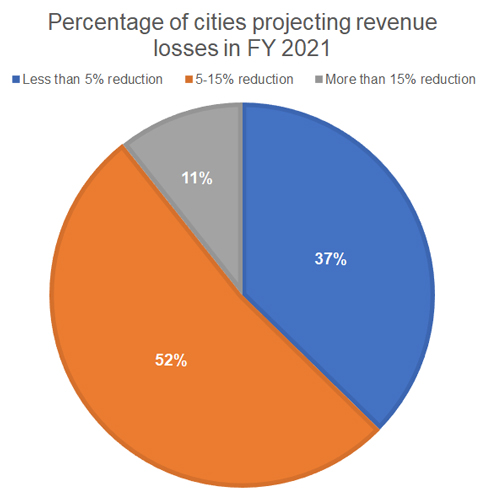
When we asked the same question about projecting 2021 revenue losses back in June, respondents reported almost the same percentages as shown above (within 3 percentage points). This indicates that while cities’ financial outlooks for next year are
challenging, their overall financial outlooks remain the same.
City revenues decline
Cities are home to thousands of businesses and receive local sales tax revenue from retail sales, lodging, and fuel taxes, all of which dipped significantly during the economic shutdown and resulting economic downturn.
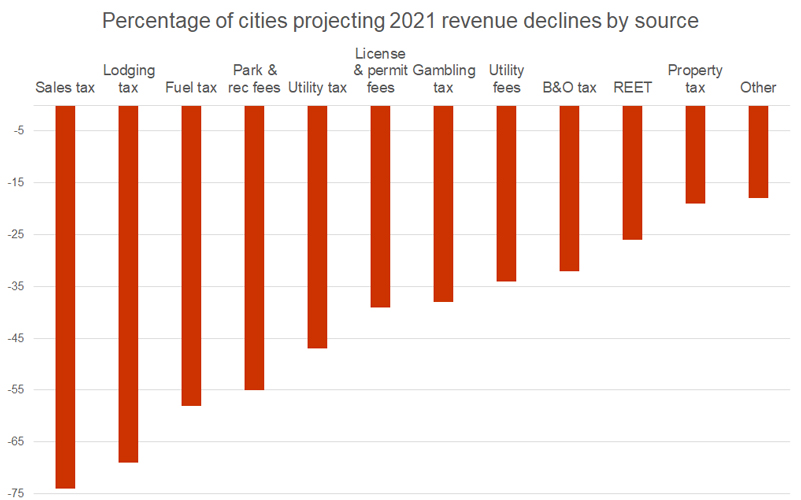
Cities moved quickly to make adjustments, preserve operations, and deliver valuable services to residents. 78% of cities said that the state could help meet local needs by providing funding to further mitigate the impacts of COVID-19.
78% of cities said that the state could help meet local needs by providing funding to further mitigate the impacts of COVID-19.
Budget & finance
City budgets are facing exponential growth in structural deficits. As cities know, the rate of inflation and cost of providing services are outpacing the arbitrary 1% property tax cap. This deficit has been magnified by the pandemic—50% of cities identify that both the property tax cap and the pandemic are contributing to their budget shortfalls.
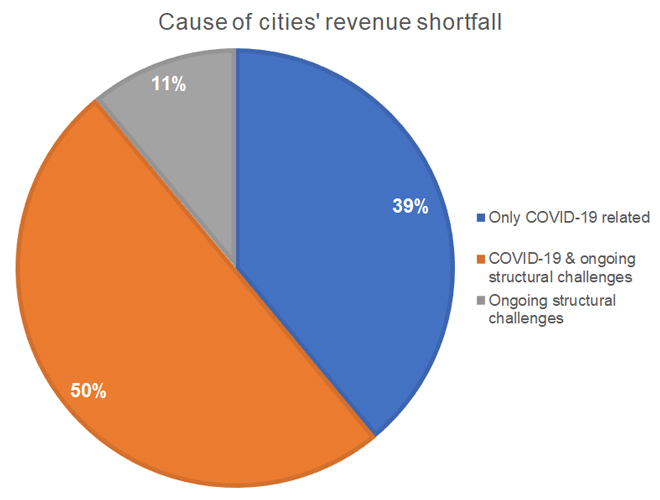
Infrastructure
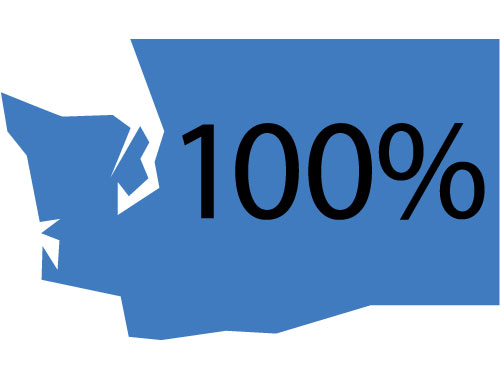
100% of cities said that increased state funding for local infrastructure projects would help their city meet its needs.
Aging infrastructure is one of the most critical, costly, and complex issues facing Washington cities. As city populations continue to grow, cities struggle to keep pace with growing infrastructure needs—whether that’s new construction, basic
operation, or increased maintenance.
 Broadband infrastructure
Broadband infrastructure
The COVID-19 pandemic has increased the pressing need for statewide high-speed broadband internet infrastructure. We asked cities if they have engaged in efforts to expand or improve broadband access, and nearly 50% said yes.
Housing & homelessness
83% of cities say that affordable housing availability is a moderate to major problem facing their community. In addition, 72% of surveyed cities lack availability of low-income housing. Contrary to the rhetoric around
housing, lack of developable land and infrastructure challenges outweighed community opposition when cities identified their top barriers. Cities also report significant challenges in expanding Urban Growth Areas and the high cost of land and construction.
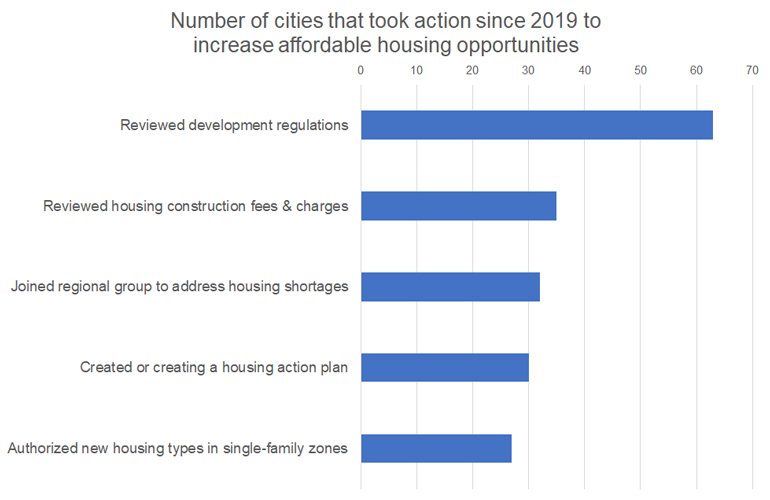
In recent years, significant discussion in the Legislature has centered on the need to provide more housing options in traditionally single-family neighborhoods. A new question in this year’s survey provided insight into how many cities already
allow diverse housing in these zones:
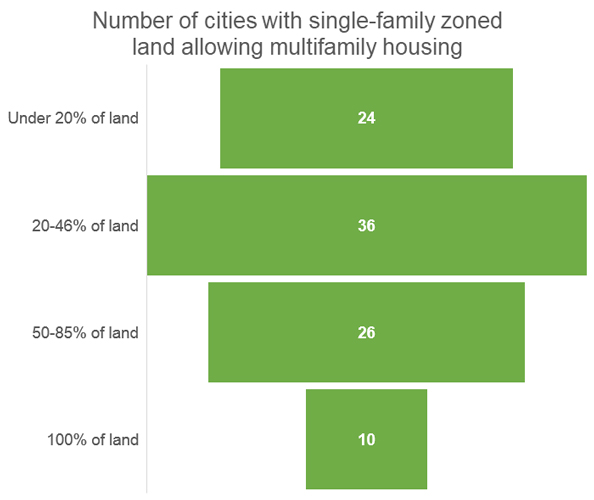
Further, more than half of all responding cities are actively addressing what housing types are allowed on single-family zoned land. These policies expand single-family zoned land to include accessory dwelling units (ADUs), tiny homes, cottages, and townhouses,
or remove single-family zones altogether. 80% of respondents need increased state funding to address city planning to support their efforts on these issues.
Transportation
Cities are stepping up to meet growing transportation needs across their communities—but the pandemic has complicated basic funding for maintenance and preservation of city streets. 42% of cities indicate state transportation funding
is a top policy issue for 2021.
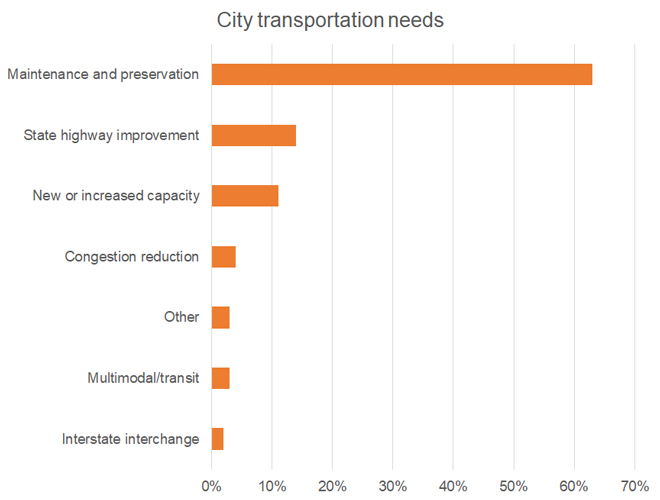
Cities are forced to rely on local funds to finance basic maintenance and preservation:
- 80% of cities use general funds to support maintenance and preservation;
- 70% of cities use Transportation Improvement Board grants; and
- 40% of cities use Transportation Benefit District funds.
The COVID-19 pandemic complicates city transportation funding. Nearly 60% of cities anticipate a significant decrease in fuel taxes due to the prolonged stay-at-home orders. 68% of cities have already cancelled or postponed
capital projects or are considering doing so within the next year.
Furthermore, 56% of cities have begun to use or are considering using capital reserves within the next year. Cities face the overwhelming challenge of financing basic operations, maintenance, and preservation of current transportation
infrastructure, and the challenge continues to grow as the pandemic goes on.
Public safety
Cities are spending greater resources on public safety measures due to the COVID-19 pandemic. Cities are committed to addressing police reform for their local jurisdictions—more than 70% of cities have discussed adopting new police
department policies, most notably:
- 88% of cities are considering adopting updated use of force standards;
- 71% of cities are looking into providing additional law enforcement training; and
- 44% of cities are contemplating a mandate for body-worn cameras.
Cities are also implementing policies such as diversity and inclusion training for officers, establishing a duty to intervene, adding dashboard cameras, forming community advisory committees, and partnering with co-responder programs:
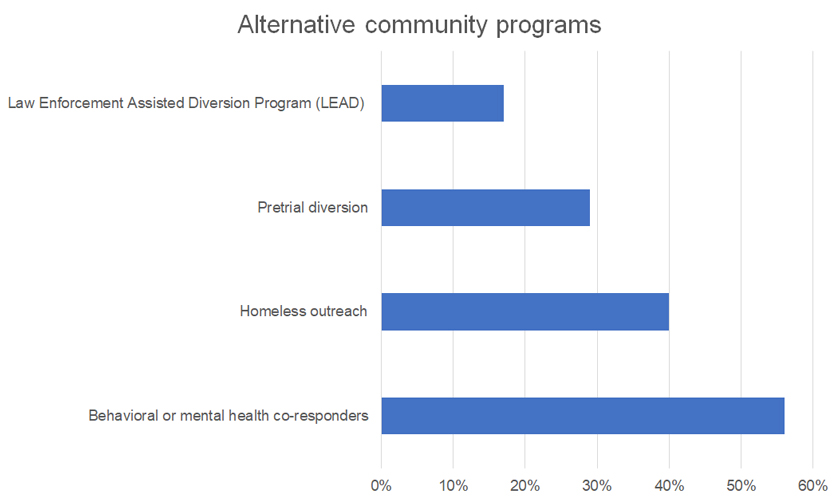
Conclusion
This year’s survey tells us that while cities took on new challenges along with the rest of the world, many cities still face the same hurdles as in prior years.
City leaders should take time this fall to reach out to legislators and share this data as well as specific examples of the barriers and needs your city faces. View our 2021 City Legislative Priorities and corresponding legislative fact sheets. If you’d like some tips and tricks for advocating for your city, view our recently updated advocacy guide.
Through ongoing uncertainty, city leaders are meeting the challenges and taking bold action to maintain and improve the quality of life for residents. We encourage cities to connect with neighboring jurisdictions to share information and resources. Working
together as city leaders will help communities emerge stronger and more resilient than ever.